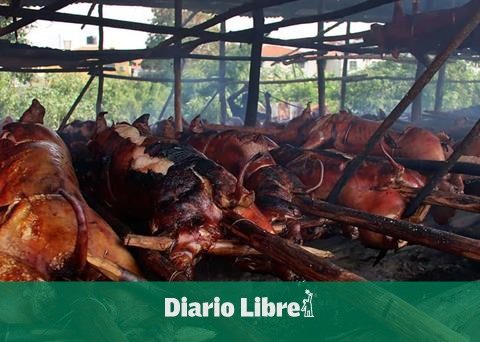SANTO DOMINGO.- The executive director of the National Institute of Drinking Water and Sewage (INAPA), Wellington Arnaud, explained this Tuesday that for the construction of the Estebanía-Las Charcas Multiple Aqueduct, in Azua, not a single drop of water has been taken from the Salto Río Grande, since this work has not been completed yet.
He explained that the Estebanía – Las Charcas Multiple Aqueduct work consists of an intake work, a 70 LPS treatment plant and lines that will feed three tanks, to bring drinking water to more than 16,000 inhabitants of Estebanía and Las Charcas. In addition, Cañada Cimarrona, another community in the area that will benefit more than 500 inhabitants, will be fed.
He stated that the lack of water in the waterfall is as inconvenient for INAPA as it is for those who used to enjoy the area as a tourist attraction. “Irregular upstream intakes have slowed the flow of water to such a low level that it affects the environment and hinders access to clean water for thousands of local communities,” he said.
He argued that the project is currently in the completion phase and has not yet taken or is taking water from the waterfall. “In other words, the causes of the lack of water are of an environmental nature (drought and climate change) and above all because the inhabitants of the area have installed more than 30 pipes and hoses without permission, to serve their crops. These phenomena put Salto under water pressure that exceeds its capacity. INAPA seeks to solve this problem by placing a single intake, which will result in a lower environmental impact and a more regular flow of water.”
He indicated that due to these irregular installations of pipes and hoses, INAPA has held meetings with the National Institute of Hydraulic Resources (INDRHI) because it recognizes the immediate need for drinking water for the inhabitants, farmers and ranchers of the area. «We have gone to the field on several occasions to talk with them and propose the execution of a field of wells and storage as a solution. These wells would allow the irrigators to disconnect from the river».
He specified that the Estebanía – Las Charcas Multiple Aqueduct project, a work started and executed irregularly by previous efforts, entered the permit system of the Ministry of the Environment on November 3, 2020 under the current management. and an inspection was carried out by ministry specialists on January 15, 2021 and the Terms of Reference (ToR) were issued on February 5 and withdrawn by INAPA on March 3, 2021.
He stressed that the aqueduct has been built within a protected area, the Francisco Alberto Caamaño Deñó National Park, specifically on the Salto Río Grande, an important ecotourism attraction, exercising the mandate established by Law 64-00 and respecting the Sectorial Law of areas protected, No. 202-04.
•»The work has been built under all the technical criteria to keep the water clean and without sediment, and at the same time allow the structure to be solid with the flooding of the river. In addition, the existing natural structure has not been modified and, when its construction is completed, the aqueduct will not eliminate the Salto Río Grande, but rather – as we have indicated – the plan is to regularize the already existing intakes, ensuring a lower environmental impact,” he added. .
He reported that the National Institute of Potable Water and Sewage (INAPA) is in permanent session with the Ministry of Environment, INDRHI and the Academy of Sciences to resolve the situation in a satisfactory manner.
“Our Institution remains committed to providing drinking water in a responsible manner, adhering to regulations and best sustainability practices to continue supporting communities throughout the Dominican Republic,” he said.
According to Arnaud, the new environmental evaluation that is being carried out, given the aforementioned setbacks and situations, takes into consideration the entire project, including the plan for the wells and storage for the inhabitants right now with their pipes and hoses, but they intend to unravel.
Likewise, INAPA is committed to providing drinking water and sanitation services in accordance with established quality parameters and carrying out all its works with the aim of promoting community development throughout the Dominican Republic by increasing access to drinking water in the whole country.

















